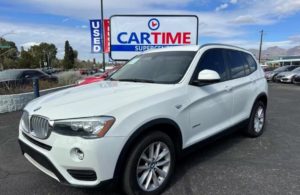Not surprisingly, driving at night poses different challenges than daytime driving. It’s also more dangerous. After dark is the most dangerous time to drive, according to the National Safety Council, primarily because of the limited visibility and distracting glare from headlights. Oncoming cars’ headlights can further reduce visibility, especially on high beams.
Even in the regular setting, misaligned or otherwise compromised headlights can temporarily distract or blind drivers of oncoming cars. Adding to the already precarious journey are the typical road markings that can be hard to see at night—particularly when a driver faces oncoming headlights. That low visibility is why you should know what to do if you are blinded by oncoming headlights.
Driving Challenges: Glare From Headlights at Night
So, why does glare from headlights reduce night driving safety so much? Driver visibility at night is compromised not only because it’s dark but also because of the way the eyes adjust. When there’s a lack of light, the pupils enlarge to let in more light. When the eyes dilate, peripheral light can appear blurry, and the sudden burst of light from oncoming headlights can be disorienting. When oncoming headlights pop up, the pupils become small again because of the increased light. The back and forth between the pupils contracting and dilating is why night driving can be so tiring and oncoming headlights so annoying.
Drivers have faced night driving safety issues due to headlight glare, probably since the first headlights were introduced. It seems manufacturers would have come up with a remedy by now. But headlight technology is moving in the opposite direction. According to NBC News, vehicle headlights have gradually transitioned from the familiar yellowish halogen to a blue LED configuration over the last couple of decades. LED headlights are popular on many modern cars and trucks, and their light is more intrusive and distracting than the conventional halogen headlights.
Since the future of headlights looks so bright, what can drivers do to minimize the danger of driving at night? Try these road-proven remedies for headlight glare instead of throwing in the towel and committing to daytime driving exclusively.
Blinded by Oncoming Cars’ Headlights
Headlights from an oncoming car can affect other drivers’ visibility up to 3,000 feet away. If you are blinded by oncoming headlights, stay calm and get your bearings. Don’t look directly at the headlights, and keep your eyes on the road. A good way to do both is to spot the painted line on the right side of the road and use it to keep your car traveling straight. As long as your eyes don’t stray too far off course, you should be able to see other vehicles, signs, and obstacles with your peripheral vision.
Blinded by Headlight Glare From Behind
We all know how oncoming cars can cause trouble driving at night because of headlight glare, but we can also be blinded by headlights behind us. The glare from headlights coming from the rear usually blinds drivers when the light reflects in the rearview mirror. Fortunately, almost every vehicle these days features a nighttime driving adjustment. Simply move the lever at the bottom of the mirror to enable the feature. Similarly, side mirrors can be adjusted to minimize headlight glare from behind.
Sometimes, your car’s headlights can create distracting glare. When driving in rain, snow, or fog, the light from your headlights can reflect off the moisture and create a glare. This glare often occurs when drivers use the high beams for better visibility, only to find the opposite. Switching your headlights to the regular setting usually solves the problem. If it doesn’t, you may want to pull over until things clear up!
How to Reduce Headlight Glare at Night
Reducing headlight glare for night driving safety is every driver’s responsibility, and many states have laws that help. State laws vary, but most require drivers to dim their headlights when their car is within 500 feet of an oncoming vehicle. It’s important to note that modern vehicles’ headlights can project more than 500 feet, so the safest option is to dim your lights anytime an oncoming vehicle is in sight.
Learning how to reduce headlight glare at night involves more than following the rules of the road and common courtesy—driving at night safely requires maintenance. Keep your car’s windshield clean and in good repair. The same goes for your windshield wipers. Ensure your wipers are operating correctly and you have windshield washer fluid. It’s also an excellent idea to periodically clean your car’s headlights and check their alignment to create greater visibility and not blind other drivers.
Car Time Supercenter: Tucson’s Trusted Car and Truck Resource
Since 1989, our family-owned business has served Tucson with affordable quality used cars and handy guides for everything from headlights to warning lights. Whether it’s time for another car or you simply want to make driving as safe and comfortable as possible, Car Time Supercenter has your back.

There are good reasons people will buy their next used car in Tucson from Car Time Supercenter. But I think we are one of the most trusted used car dealerships mainly because we treat everyone like family. My family has provided quality, dependable local used cars to Tucson customers since 1984, and I’m proud to be a part of our continued success.
Like many family-owned businesses, I grew up going to work with my dad. Falling in love with cars was natural because of my father’s passion, and eventually, I came to love the car business just like him. I officially joined the Car Time Supercenter team in 2012, starting in the finance department. Over the past decade, I’ve learned the used car business and how to treat customers from my family and industry resources.
Today, I oversee marketing, social media, inventory, and reconditioning, so I play an essential role in delivering local Tucson used car buyers the best experience possible. I also help our family business keep up with the times while providing old-fashioned customer service. From attending NADA classes to becoming Allstate certified for back-end products, I continue to learn and add skills to serve our customers better.




